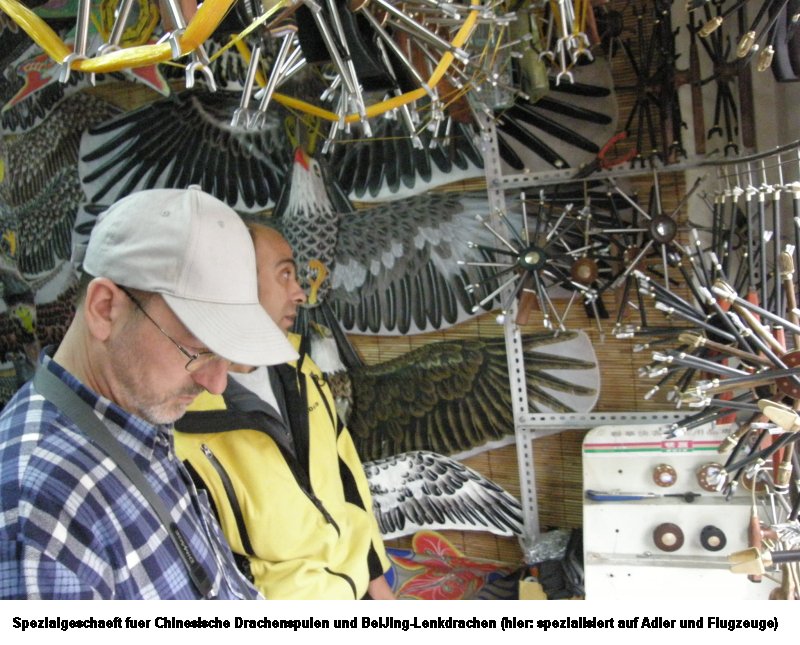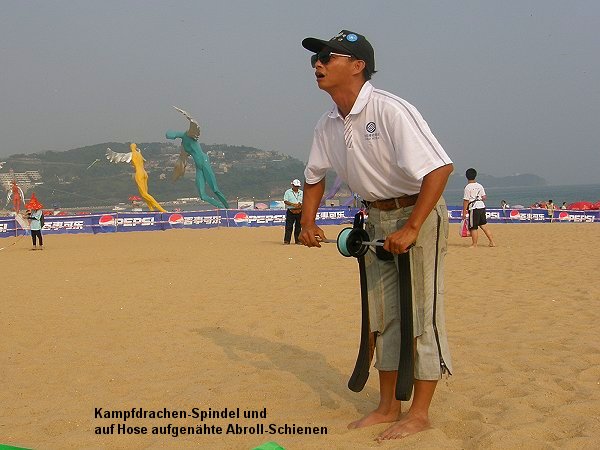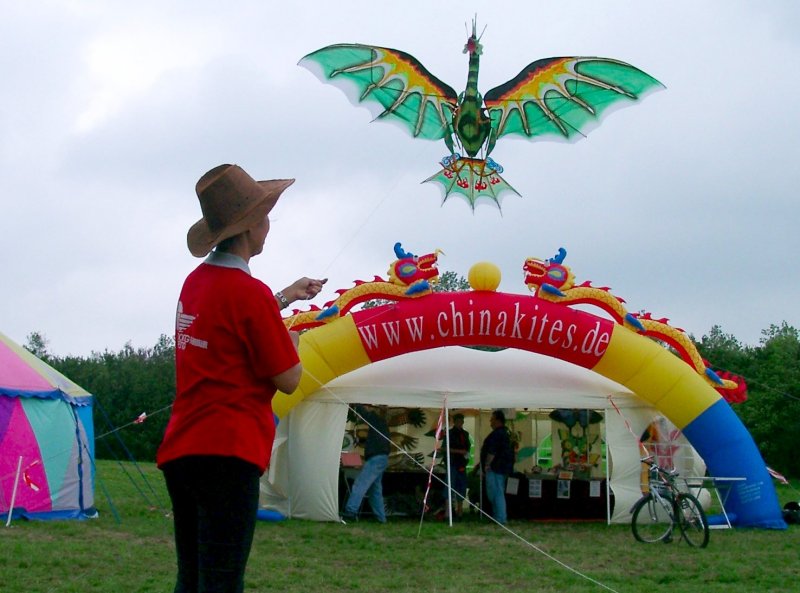 Original Chinese Kites - Just Have
a Look and Enjoy
|
|||
| Chinese Hand Reels are operated using your index or your thumb. You will find technical explanations and hints at "(3) Werkzeuge zum Aufwickeln der Drachenleine" ("tools for winding up the kite line") in the section about Flying of Chinese Kites. |
 |
 |
|
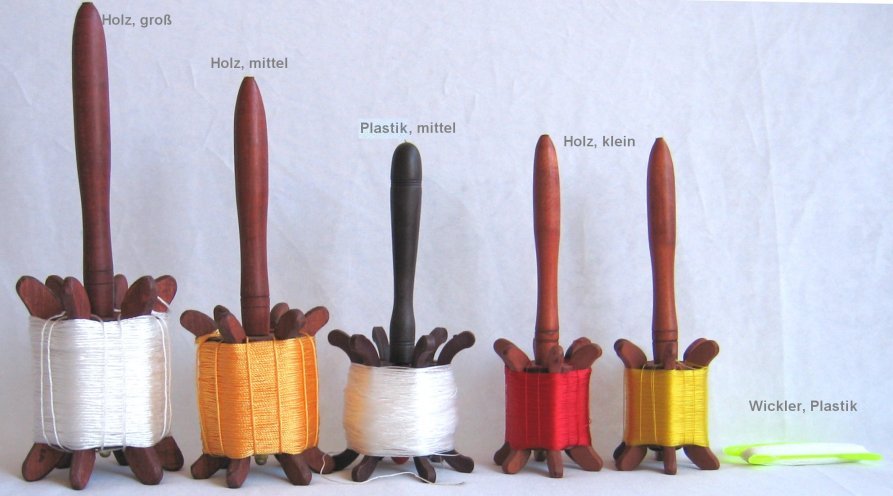 please cf. Kites Accessories |
|||
| Winding up a kite line,
using a Chinese Hand Reel (XianHuanZi) needs a
little practice, but may be extremly efficient and fast.
But exercise is a "must". Next picture illustrates the rewinding
process. The reel is suitable
for small and light kites (swallows,
small eagles
and aeroplanes
etc.). |
|||
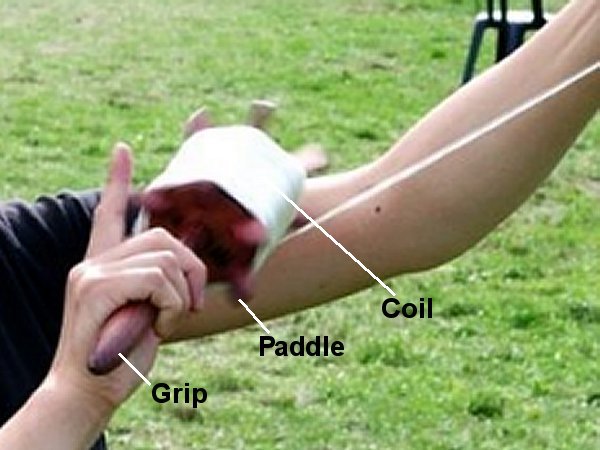 |
|||
|
|||
Because of the achievable high-speed rewinding process, Chinese hand reels are very often used in competitions. Next photo shows a competition in Yinchuan (Ningxia Province, PRC) in 2011, attended by several European teams. |
|||
|
Contestants with Chinese hand reel (index finger technique) Click image for additional photo (Yinchuan 2008) |
|||
| Fighting Kite Reels Kite fighting is ubiquitously to be found all over Asia. In most countries it is performed by cutting off the enemy's line, with the subsequent loss of kite. Exceptions are Rokaku-fights: the contestants are just kicking the opponents out of the sky. Obviously the more friendly and less dangerous variant of the sport, (common in Japan, Europe, North America and other Western-influenced countries). At the Spring 2011 session of the International Kite Federation, the IKF Executive Committee adopted a proposal from the representatives of New Zealand, Australia, Denmark and Germany, to support and forward this much less dangerous competition variant. |
|||
| Back to the
"bad boys":
cutting of kite is
usually performed with
the aid of glass powder coated
kite lines
(Manja).
To cut off the
opponent's kite, a high
tension of the cutters kite line is needed. To
generate and propagate the high tension
needed, the
line must be rewound
very quickly. High winding speeds are achieved either by increasing rewinding speed with the coil bodies of the same diametery (faster turning, diminish gear ratio, or else), or otherwise, increasing the coil diameter itself. Technically complex rewinding mechanisms (gear transmission ratio etc.) are often in contradiction with the reliability of the winding process. |
|||
|
Click image for
photo of competition reel with increased diameter
coil (ShenZhen 2007)
|
|||
| There is a
technical compromise of
a high-speed winding
process by means of
a special rewinding
technique,
often successfully performed by
Koreans and athletes
from Hong Kong and Aomen
(Macao). Towards any unsuspecting competitor, a
real "Story of a Youth Who Went Forth to
Learn What Fear Was". |
|||
| A simple
coil is used. Both handles are extended to about 40cm
each. The lengthened spindle is placed onto the
inclined thigh. The rewinding process is generated by
rolling out the extended spindle-arms on the inclined
thigh. Moreover, the legs of the kite-fighters
trousers have sewn in rails. These rails have slightly
curved ends, that automatically throw back the already
rotating coil. The winding speeds are unbelievable. During this years International Kite Festivals in Weifang, and Yinchuan, the participants from Hong Kong were the most successful ones. A comment from a unsuspecting, visibly shocked and stunned Sino-American participant, whose fighter kite had been successfully cut: "... they slaughtered everyone, they really slaughtered everyone ...". |
|||
| Special Reels Kiting people are definitely concerned about exclusivity. Apart from the completely molded Bronze Reel (only because of the golden colour tone!), the reel has subsequently a full-blown coil with supra-and sub-setting and of course first class ball bearings. For the divinely gifted technology enthusiast, there is of course the bike-reel coil with multi-gear and integrated hand brake. The pictured specimen is from the kite builders village YangJiaBu , and was sold for the equivalent of 20 € by a street vendor. Comparing Chinese standards, an expensive pleasure, but you deserve it! 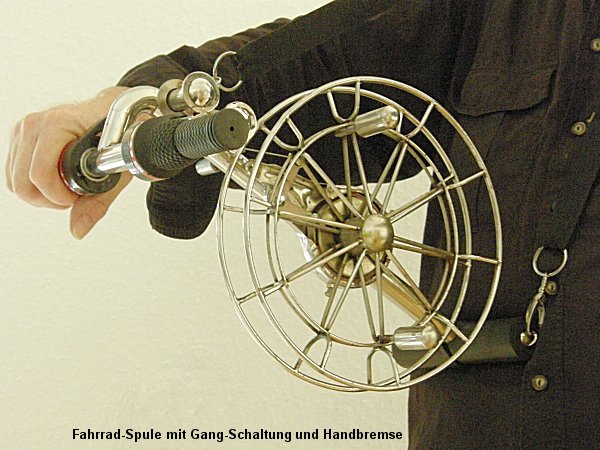 |
|||
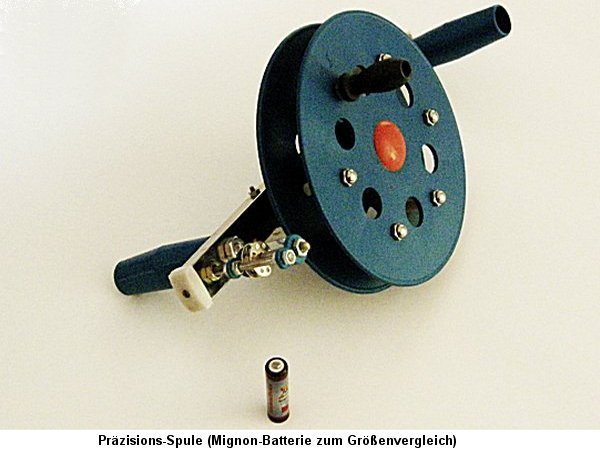 |
|||
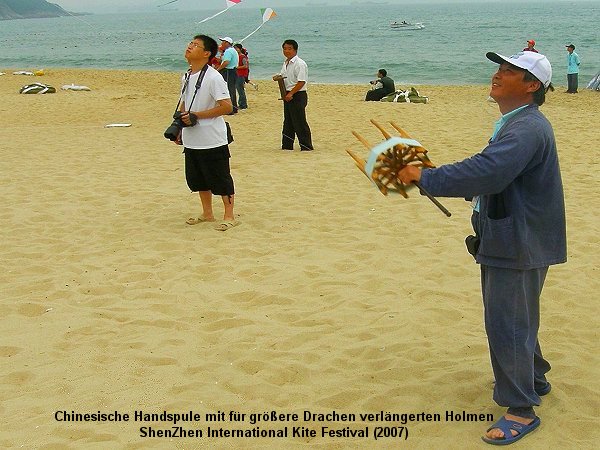 |
|||
|
|
|||
| |
|||
| You are just a mouse click away from our kites and kite accessories. If you want to have personal contact, want to have a personal impression of our kites, just meet us at one of these kitefestivals (just click to see)! | |||
|
|
|||
| Every
year
we are making Kite
Journeys to China. We experience China at its
best, and fly your kites on TianAnMen Square or on top of
the Great
Wall, at the Temple
of Heaven, or on Mount TaiShan, or at the shores of
the Yellow Sea. During our stay at the Olympic Kite
Festivals, we are welcomed guests of visited Cities and
Counties. Our kite journeys will lead us towards WeiFang or QingDao and frienly GuiYang
(end of April / first week of May). Other kite journeys
will lead us to ShenZhen,
HongKong and GuangZhou (October). BeiJing is of cause always
part of our trip. |
|||
Copyright
2002 ff: Hans
P. Boehme
|
|||
